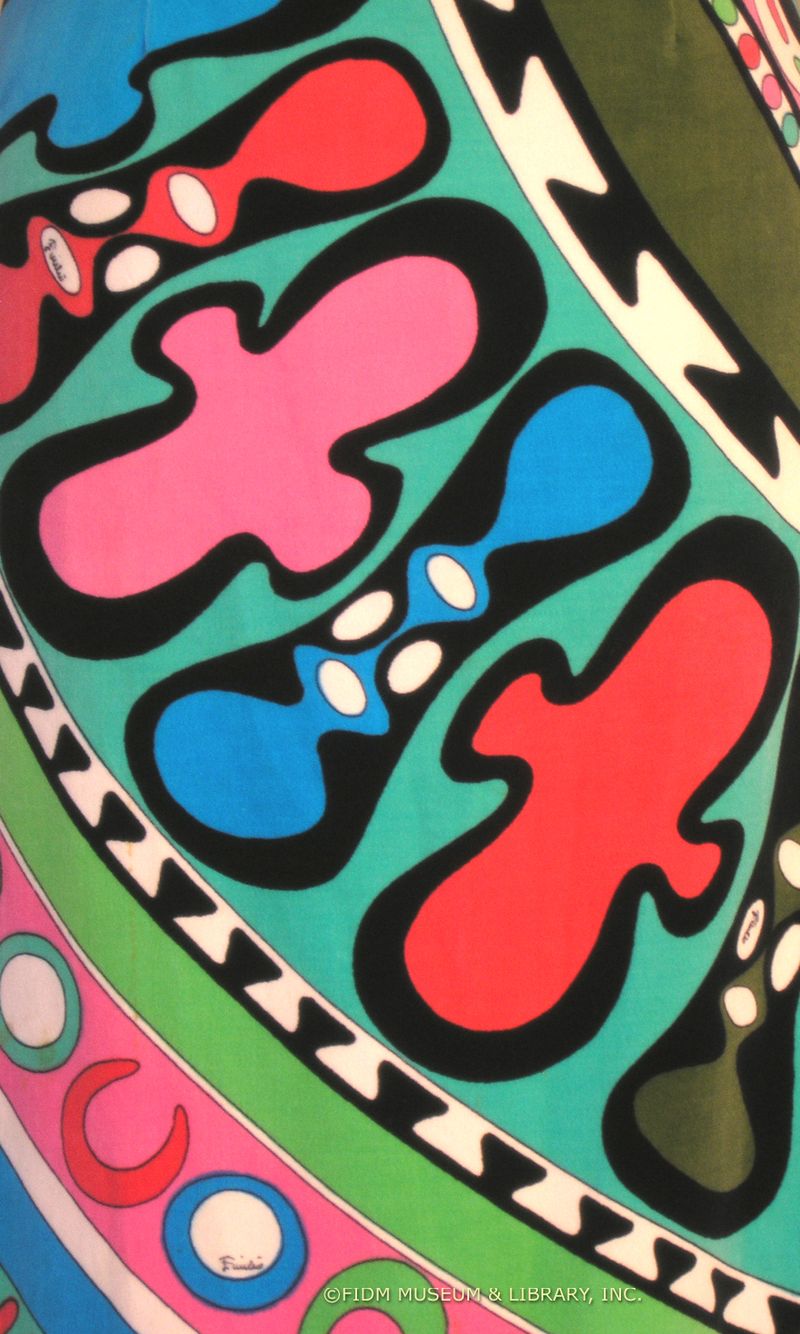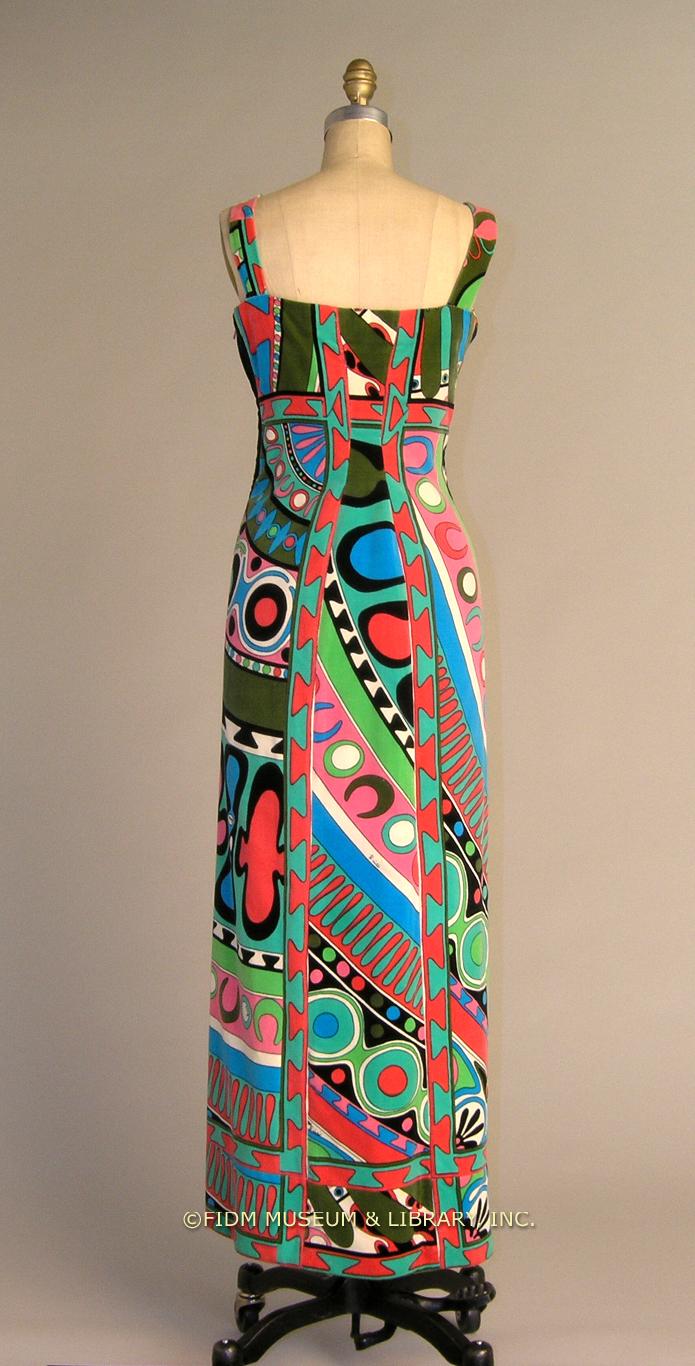Emilio Pucci’s (1914-1992) intensely colored prints are one of the most easily identifiable “signatures” in fashion. Often described as “kaleidoscopic,” a classic Pucci print is a swirling mass of abstract shapes, sinuous lines and wild color. Pucci designed the prints himself, drawing inspiration from his Italian heritage and his extensive travels around the globe. The dynamic composition of the prints was perhaps inspired by Pucci’s experience as a World War II pilot. In later years, he “clearly recalled the constant movement and the kaleidoscope of colors that spread out before him” when flying over Europe.1
By the early 1960s, Pucci prints, in the form of lightweight, easily packed silk jersey dresses, were tremendously popular with the international jet set. Not only were the prints exciting, but also the fit. Pucci’s dresses were designed to highlight the body, lacking the rigid understructure of most 1950s dress designs. Widely copied at all price-points, the exuberant pattern and figure-skimming silhouette of a Pucci dress embodied the youthful, optimistic spirit that dominated the 1960s.
Maxi dress
1964
Emilio Pucci
Gift of Mrs. Robert L. Wood
97.692.1
When Pucci first began designing sophisticated, yet casual, capri pants and silk shirts on the island of Capri in the late 1940s, he purchased his fabrics from retailers. By the early 1950s, Pucci’s popularity and reputation had grown to the point that he was able to work with textile firms to produce the specific fabrics he wanted. He preferred to work with natural fibers, like cotton, cashmere or his signature silk jersey. After a suitable foundation fabric was developed, Pucci personally supervised the process of printing his signature textile designs on the base fabric. To help authenticate his widely copied textile designs, Pucci prints always included “Emilio” as a visible design element. This can be seen in the (slightly blurry…sorry!) detail image below.
The vibrant Pucci print seen on this dress was inspired by a trip to Africa in the early 1960s. Presented in the summer of 1964, the entire collection featured prints inspired by African masks on both silk jersey and the velveteen seen here. In the image above, look for the elongated pink, green, blue and red lozenges, which resemble abstracted masks. A New York Times fashion critic called the prints, “direct and strong…completely modern.”2 In borrowing from African art, Pucci followed in the footsteps of influential 20th century modern artists, including Picasso, Matisse and Brancusi. All of these artists, and many others, found that stylized African art offered an inspiring change from the naturalism of Western art.
97.692.1 Back view
1 Kennedy, Shirley. Pucci: A Renaissance in Fashion New York: Abbeville Press. 1991: 25.
2 Peterson, Patricia. “Pucci Paints Fashions in Bold Strokes From Africa.” New York Times 21 July 1964: 24.





WOW. If this dress ever goes missing, it may or may not be in my closet!
Kat, just make sure you don’t wear it around the FIDM campus! The museum staff might have to take extreme measures to get it back.
This garment is absolutely remarkable. In the hands of an artist, these colors and shapes and the overall design of the dress absolutely sing. Were I to try something like this, the result would look like a monkey let loose in a paint store. Ha!
It is pretty amazing that this bright pattern, filled with so many colors and shapes, looks as harmonious as it does. I like your word Becky…this Pucci really does “sing!”
I bought his negligee, with matching robe in 1964 and I cannot find the signature on it. Not sure if fell off or where it is. Until I find it I can’t sell it for full value. It is out of this world and I have never seen another. It should be in a museum. Hoping someone can help me. I once wore it to a costume party and it sure was a hit.
Kaleidoscope design, I looked like the hippie of my time.